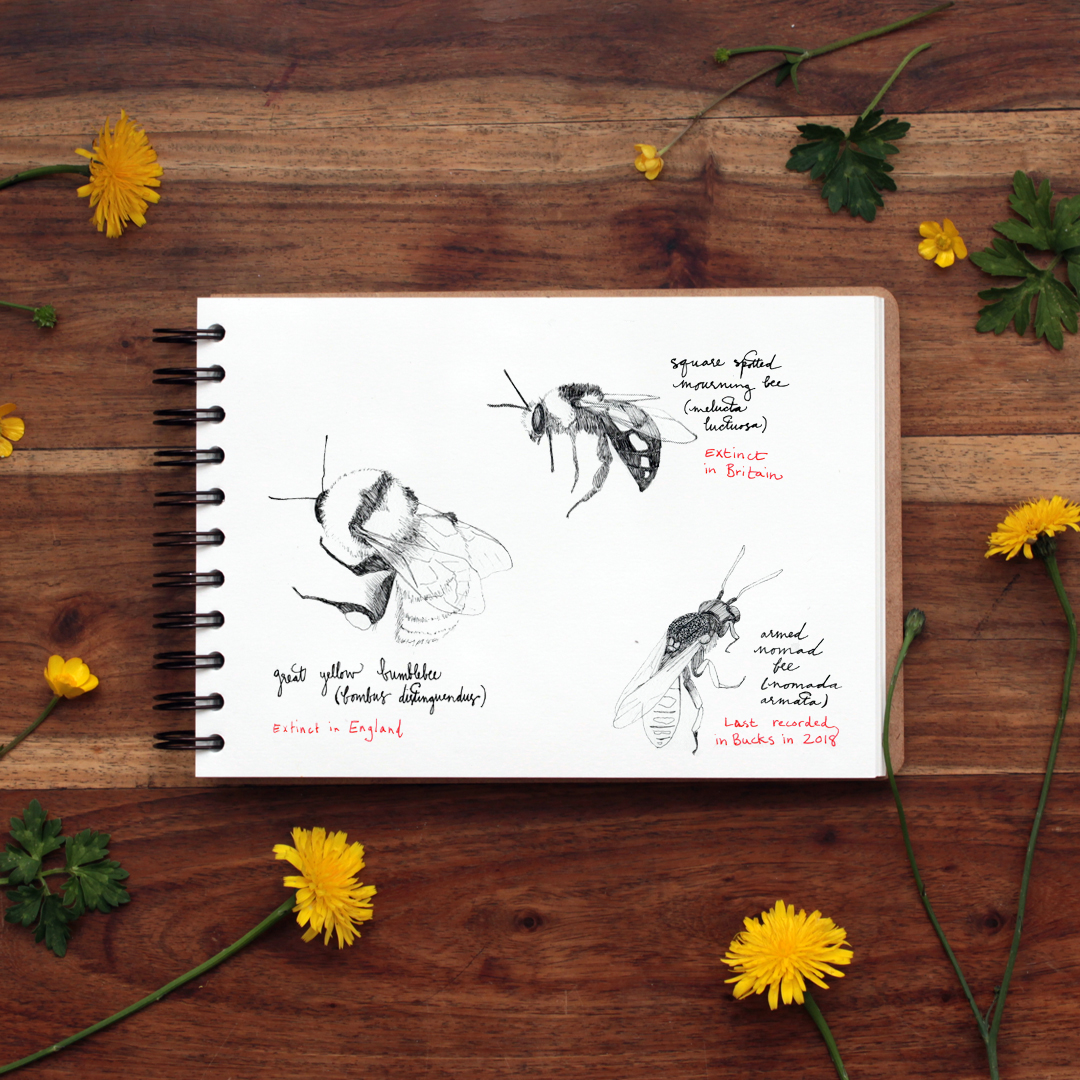
This morning I started my day with a webinar, LIFE: Stepping up to save bugs, which focused mainly on the EU Biodiversity Strategy and policy developments with an emphasis on invertebrates. After that, I was straight into a meeting with Planning at Buckinghamshire Council, to discuss how we – as the Local Nature Partnership for Buckinghamshire & Milton Keynes – can work more effectively with the council to achieve goals such as biodiversity offsetting, natural capital gains, and eco-system services such as natural flood management.
These meetings had me thinking a lot about our species that are in decline, and bees in particular since I am such a fan of wild bees. I’ve illustrated three species that are in various stages of decline across the UK.
The square spotted mourning bee (Melecta luctuosa) is presumed to be extinct in the UK. Mourning bees are a cleptoparasitic species, which means they lay their eggs in the nest of host bees, much like how a cuckoo bird lays its eggs in the nest of another bird. The decline of the square spotted mourning bee has coincided with the decline of its host, the Potter flower bee (Anthophora retusa). Sightings of the Potter flower bee have been reduced to a handful of sites in the south of the country, but there are no recent UK records for the square spotted mourning bee.
The great yellow bumblebee (Bombus distinguendus) is one of Britain’s rarest bumblebees. It is a late-emerging bee, with queens found on the wing around now in mid-June. Its range used to stretch across the whole of the UK, including England, Wales and Northern Ireland, but now it is confined to a few sites in Scotland. This decline is attributed to loss of habitat. This fluffy golden bee is currently only found in areas that maintain traditional crofting practices with flower-rich machair.
The armed nomad bee (Nomada armata) is a locally extinct bee with only a few known sites left in England, but it was recorded at two different reserves Buckinghamshire in 2018, which is outside of its known locations. These sightings could be outliers or it could be that the armed nomad is expanding its range. It is a Red Data Book 1 species, listed as being of Principle Importance in the NERC Act. This is another cleptoparasitic bee, and its host is the large scabious mining bee (Andrena hattorfiana), another rare species but one that is known to be expanding its range and has been recording at sites in Buckinghamshire. Given the name of its host, it probably comes as no surprise that the armed nomad bee can be found near scabious flowers. You can read more about this bee on Martin Harvey’s blog, Kitenet, which has an excellent post about his 2018 sighting.
Bees are only some of the insect species in decline and they are really key species in our ecosystem, so it’s important to protect all insects. Plant pollinator friendly plants, stop using pesticides in your garden, and encourage your local council to adopt insect-friendly policies, such as reducing road verge cutting. We all can do our part!